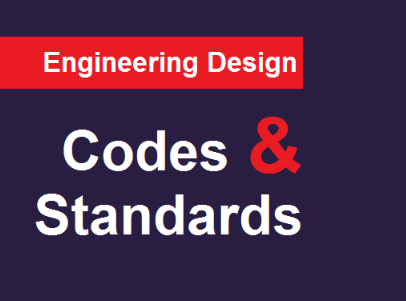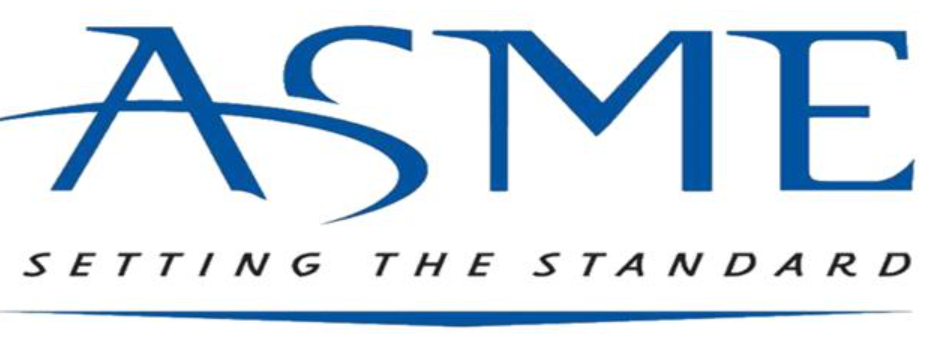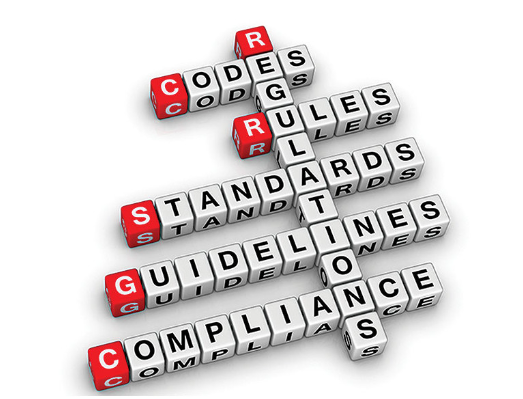

1. What is the primary purpose of ASME B31.3?
Why was ASME B31.3 developed, and what industries does it primarily apply to?
Explanation: ASME B31.3 was developed for piping systems in various industrial and chemical plants, including petroleum refineries, chemical plants, and more.
2. What role does ASME B31.3 play in materials selection?
How does ASME B31.3 contribute to preventing corrosion and other failures in piping systems?
Explanation: ASME B31.3 specifies the appropriate materials for different fluids and pressure conditions, helping to prevent corrosion and other failures in piping systems.
3. What critical design parameters does ASME B31.3 address?
What design aspects does the code cover, ensuring the quality and integrity of piping?
Explanation: ASME B31.3 covers formulas and calculations for pipe wall thicknesses, flange ratings, and other critical design parameters to ensure the quality and integrity of piping systems.
4. What does the code require regarding inspection and testing?
Why are regular inspections and tests mandated by ASME B31.3?
Explanation: ASME B31.3 requires regular inspections and tests to identify potential problems and ensure the long-term safety of piping systems.
5. What spectrum of process applications does ASME B31.3 cover?
From what types of fluids to what types of fluids does the code apply?
Explanation: ASME B31.3 covers a diverse spectrum of process applications, from raw chemicals to cryogenic fluids.
6. Why is ASME B31.3 internationally recognized?
What contributes to the global acceptance and use of ASME B31.3?
Explanation: ASME B31.3 is widely accepted and used around the world, facilitating global trade and collaboration.
7. Who relies on ASME B31.3?
Who are the primary users of ASME B31.3 in various stages of piping system development and operation?
Explanation: ASME B31.3 is a vital resource for everyone involved in the design, construction, operation, and maintenance of process piping systems.
25+ Relevant topics on Codes & Standards
Short Article on Codes & Standards


ASME B31.3 – Process Piping: A Vital Standard for Chemical and Industrial Plants
What is ASME B31.3?
ASME B31.3 is a comprehensive code developed by the American Society of Mechanical Engineers (ASME) that sets the standards for the design, construction, inspection, and maintenance of piping systems in a wide range of industrial and chemical processing facilities. These include:
- Petroleum refineries
- Chemical plants
- Gas processing plants
- Pharmaceutical plants
- Textile plants
- Paper mills
- Semiconductor plants
- Cryogenic plants
Why is it important?
The safe and reliable operation of these facilities depends heavily on the integrity of their piping systems. ASME B31.3 helps to ensure this by providing detailed guidelines for:
- Materials selection: The code specifies the appropriate materials for different fluids and pressure conditions, preventing corrosion and other failures.
- Design: The code provides formulas and calculations for determining pipe wall thicknesses, flange ratings, and other critical design parameters.
- Fabrication: The code outlines specific welding, bending, and forming procedures to ensure the quality and integrity of the piping.
- Inspection and testing: The code requires regular inspections and tests to identify potential problems and ensure long-term safety.
Key Features of ASME B31.3:
- Applies to a wide range of fluids: From raw chemicals to cryogenic fluids, the code covers a diverse spectrum of process applications.
- Comprehensive and detailed: The code provides detailed information on every aspect of piping, from materials selection to testing procedures.
- Safety-focused: The primary goal of the code is to prevent accidents and ensure the safety of personnel and the environment.
- Internationally recognized: ASME B31.3 is widely accepted and used around the world, facilitating global trade and collaboration.
Who uses it?
ASME B31.3 is a vital resource for everyone involved in the design, construction, operation, and maintenance of process piping systems, including:
- Engineers: Design engineers rely on the code for safe and efficient piping design.
- Fabricators: Fabrication shops follow the code to ensure quality and compliance.
- Inspectors: Inspectors use the code to assess the integrity and safety of piping systems.
- Plant operators: Plant operators use the code to maintain the safe operation of their facilities.
Overall, ASME B31.3 plays a crucial role in ensuring the safety and reliability of process piping systems in a wide range of industrial applications.
I hope this summary is helpful! Please let me know if you have any further questions about ASME B31.3 or any specific aspects of it.
Table of Contents
Don’t miss the Course on Effective Isometrics Management: Check Now
Enrollment Link
Recommended courses (Published on EPCLand)
- Complete Course on Piping Engineering
- Basics of Piping Engineering
- Piping Layout Engineering
- Piping Material Engineering
- Piping Stress Analysis
- Material Requisitions
- Piping Material Specifications
- Valve Material Specifications
- Plant Design & Layouts-OISD 118
- Isometric Management
Library of Technical Articles
Don’t miss out the collection of 15+ articles on following topics:
- Basics of Oil and Gas Industry
- Valves
- Testing
- Tank
- Piping Bulk Items
- Pipe
- Metallurgy
- Piping Materials
- Layout
- Instrumentation
- Heat Exchanger
- Type of Contracts
- Codes and Standards
- ASTM Standards
- Articles on Piping Specialty Items
Video details of Complete Course on Piping Engineering
Why Enroll in the EPCLand
Proven Track Record– PTR
Activities & Achievements before launching EPCLand
- Published more than 50+ short courses
- 3000+ Enrolments
- More than 3,500,00 Minutes of watch hours in the last 2 years
- 4000+ Students in 100+ Countries
- Rating of 4+ out of 5
- 1000+ YouTube Videos
- 8K+ Subscribers
What Students will Learn
- Codes & Standards of the Energy Sector
- Piping Material Engineering
- Piping Layout Engineering
- Stress Analysis
Interesting facts
- All the published courses have been developed by Industry Experts with more than 2 decades of experience
- Content is based on Practical experience and real-time problems.
- Content is designed and organized in such a manner that it can be easily grabbed.
- Complete website, Blogs and Quiz sections are Planned, Designed and published by myself (About me: Atul Singla)
- Complete flexibility of Time & Location, Students can access the content from anywhere & anytime
- Moreover, once enrolled, the content can be access as many times as you want, which helps in understand the fundamentals in a better way.
Conclusion
In conclusion, our courses are meticulously crafted by industry experts with over two decades of hands-on experience. The content is rooted in practical knowledge, addressing real-time problems. The material is thoughtfully designed and organized for easy comprehension. Every aspect, from the website to blogs and quizzes, has been planned, designed, and executed by Atul Singla, ensuring a comprehensive and seamless learning experience. With the flexibility of accessing the content at any time and from any location, students have the freedom to learn on their terms. Furthermore, enrollment grants unlimited access, allowing learners to revisit the material as often as needed, fostering a deep understanding of the fundamentals.



